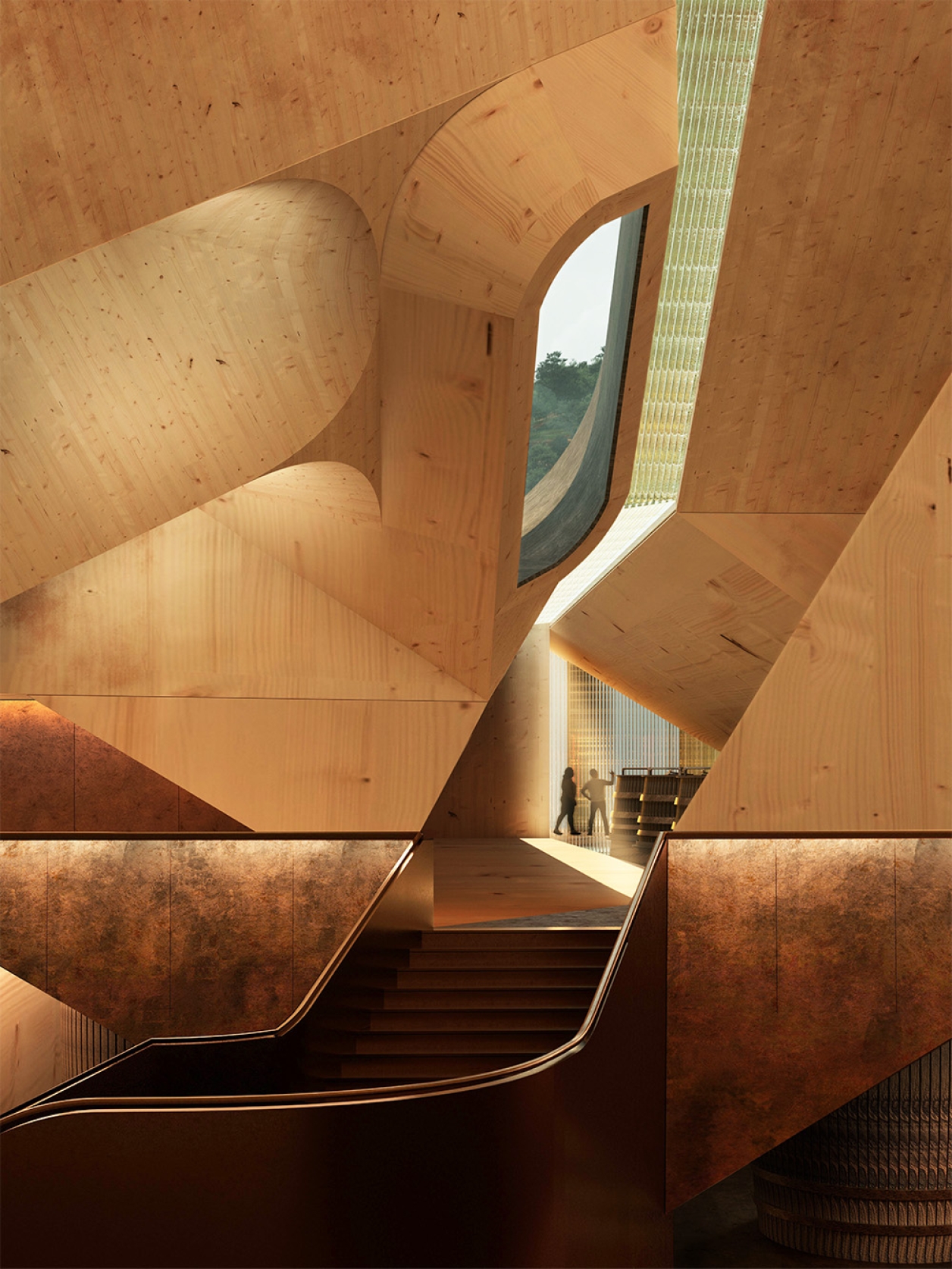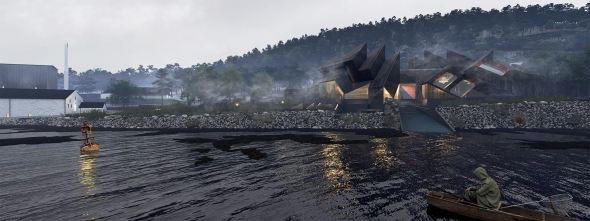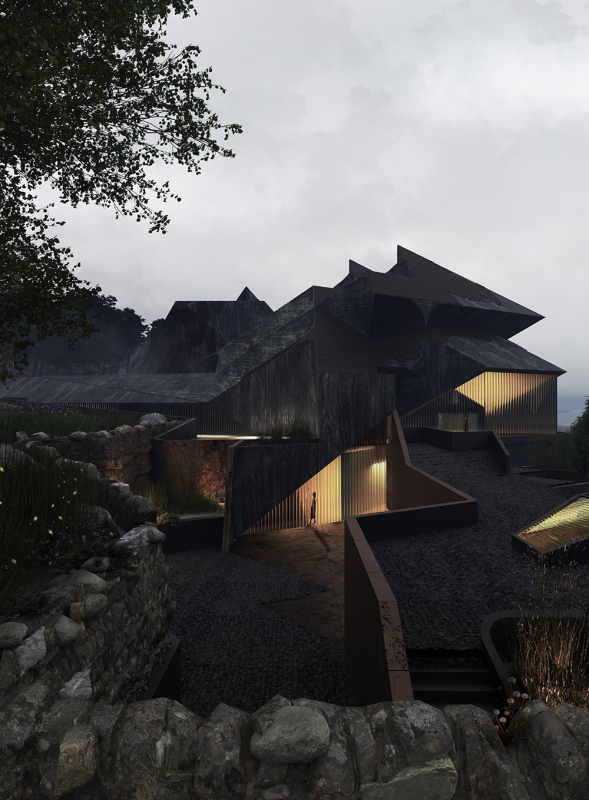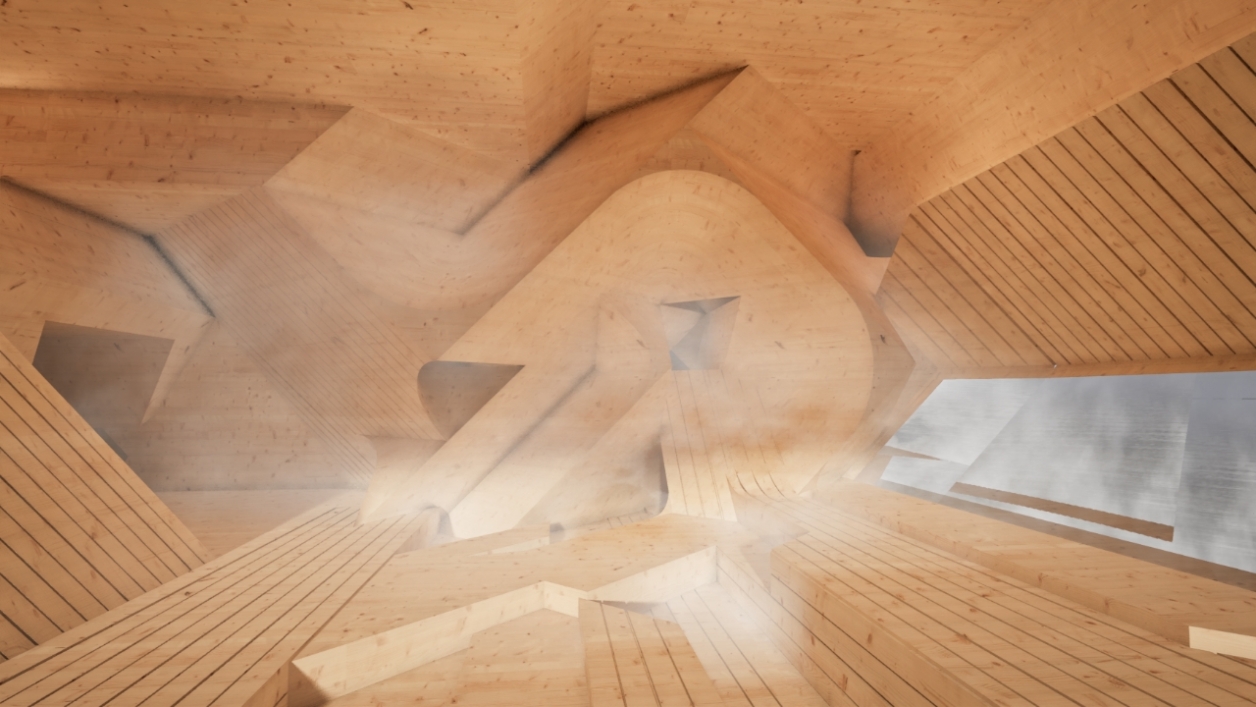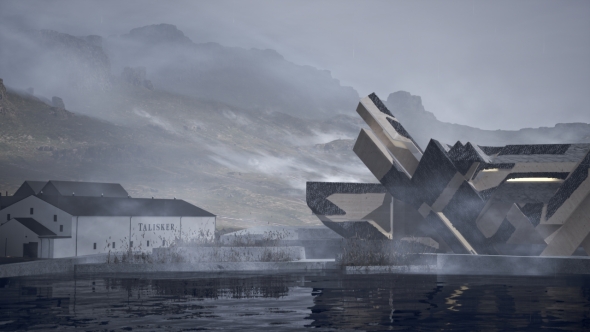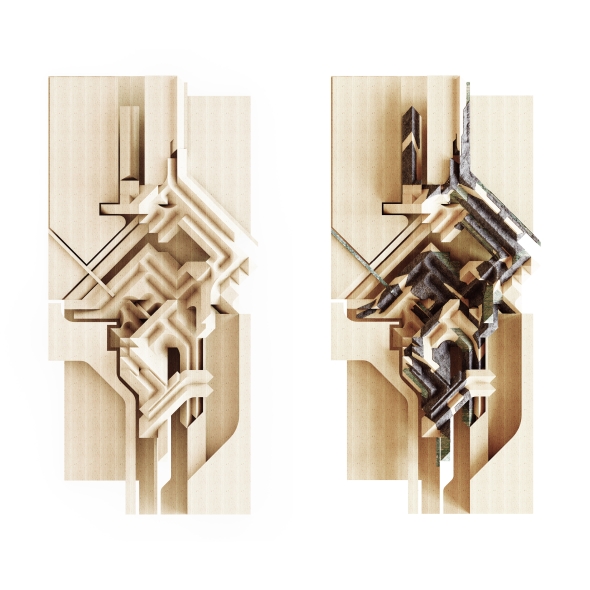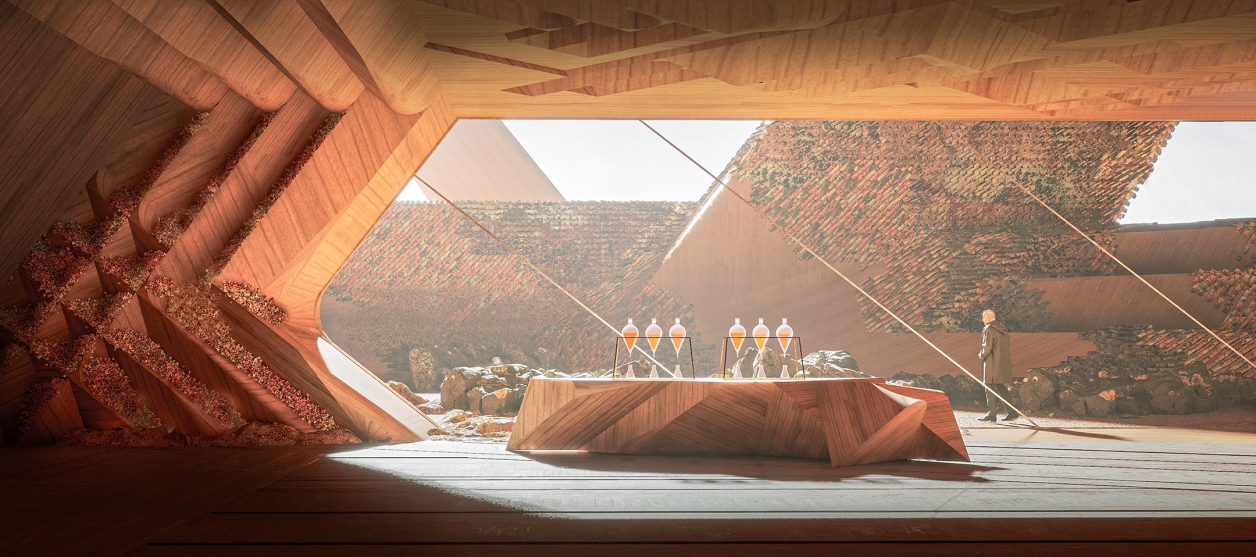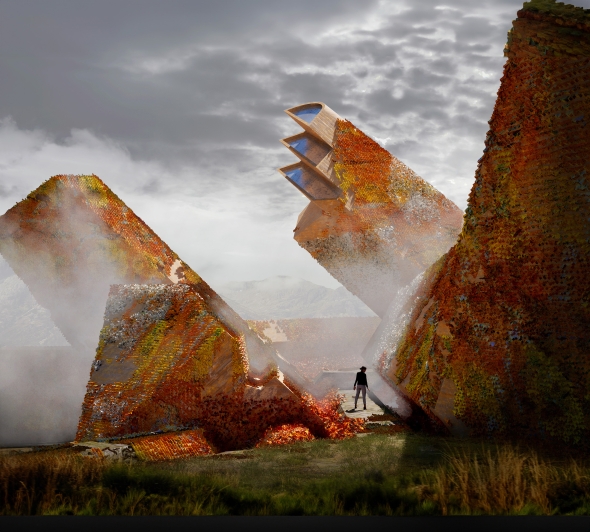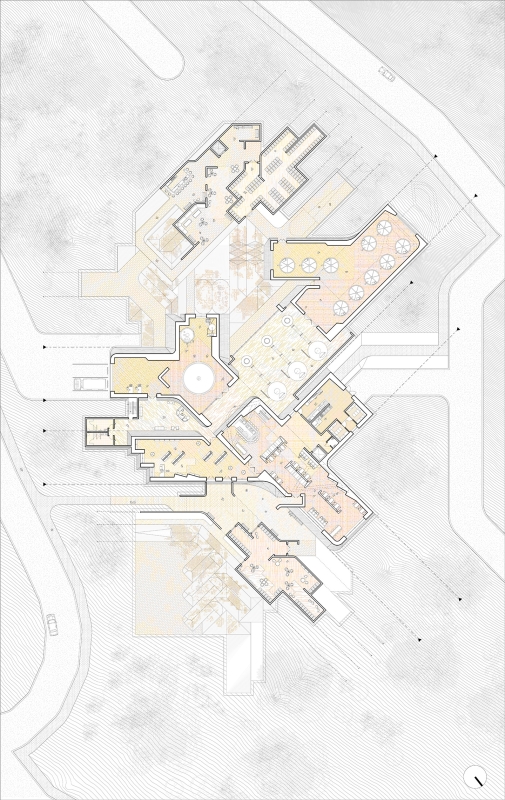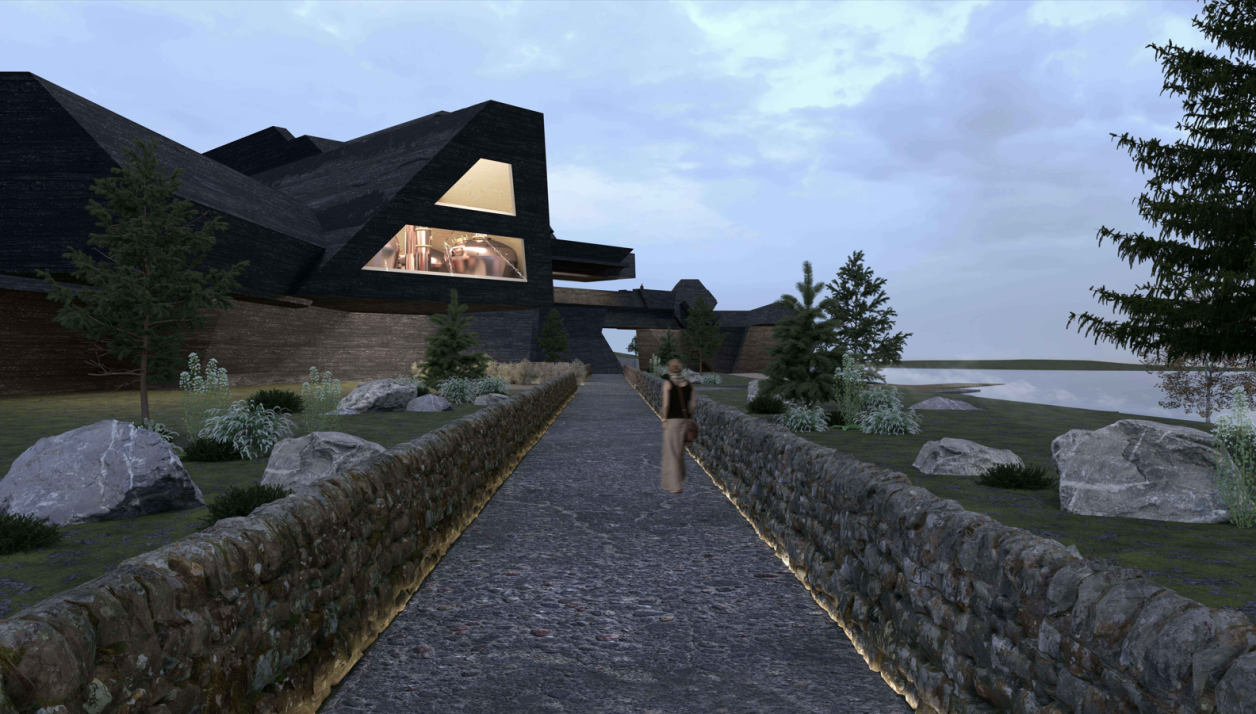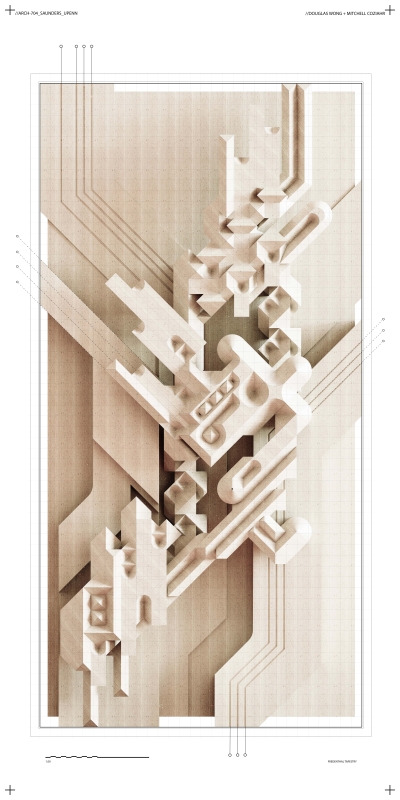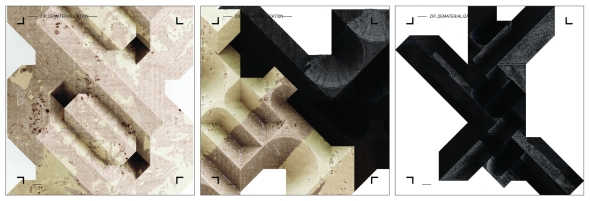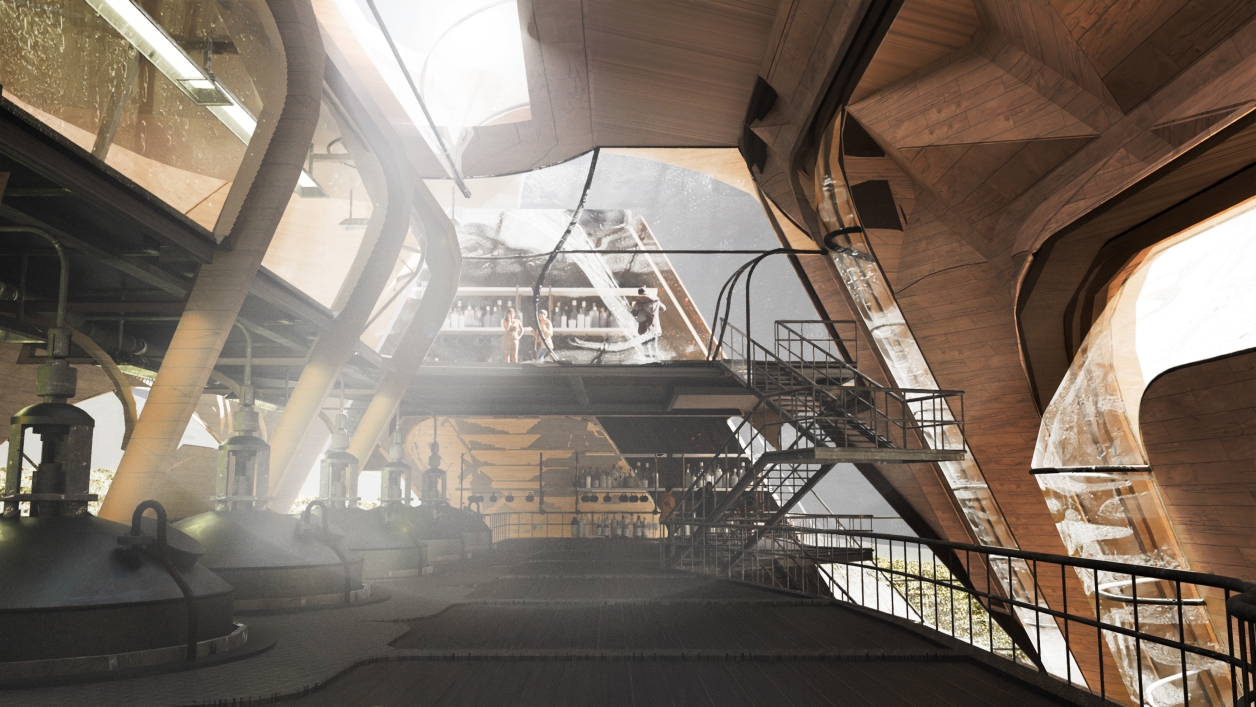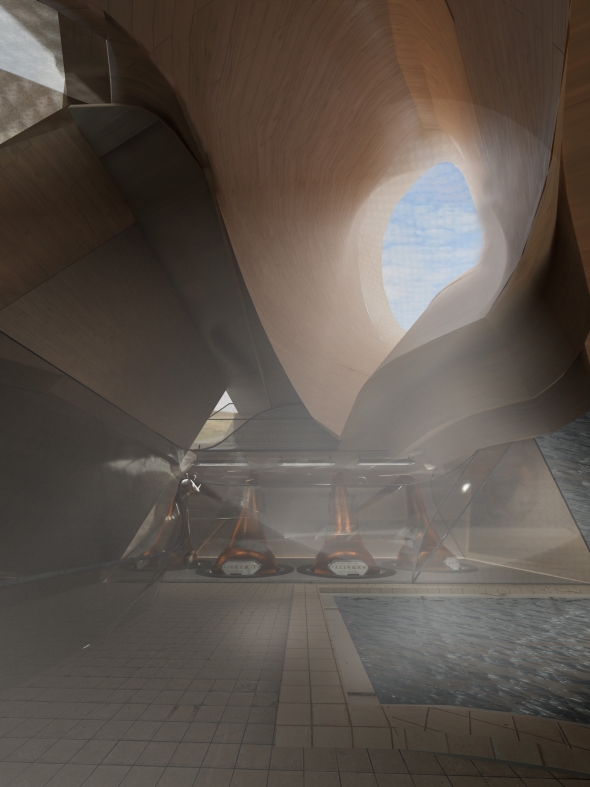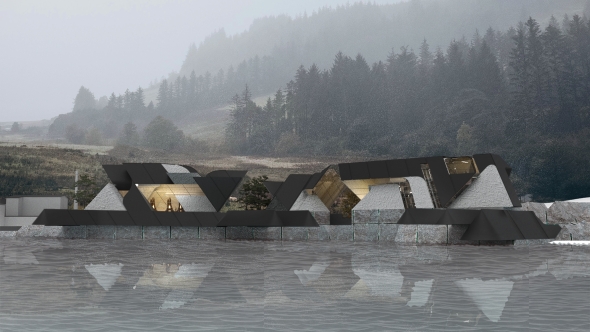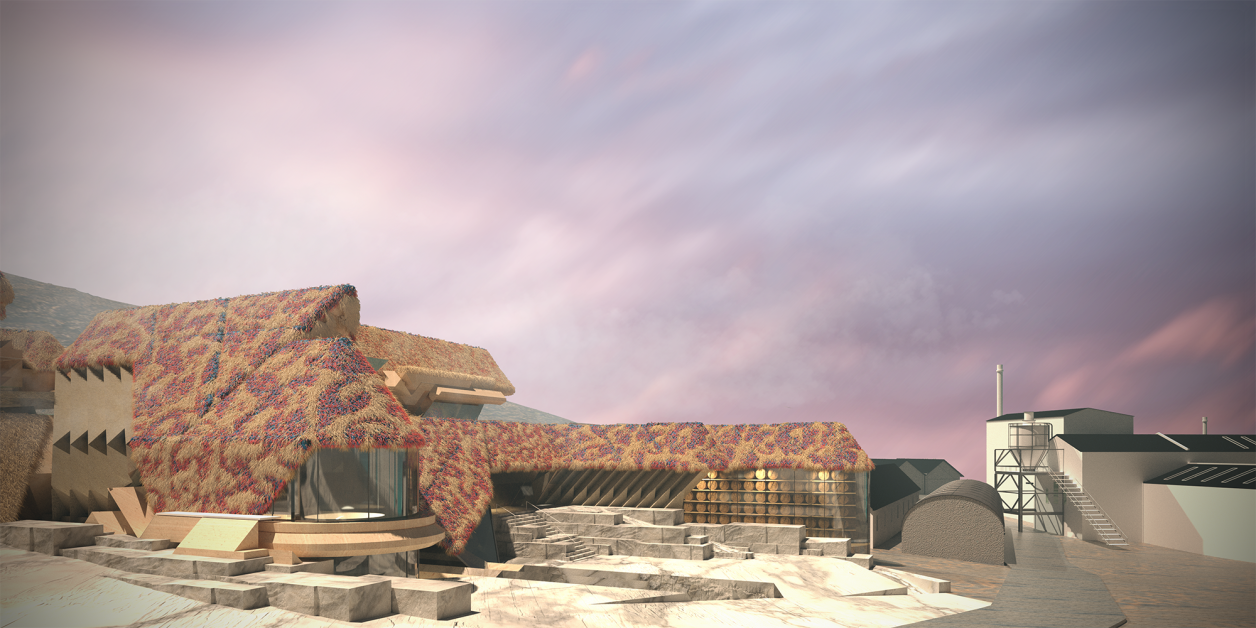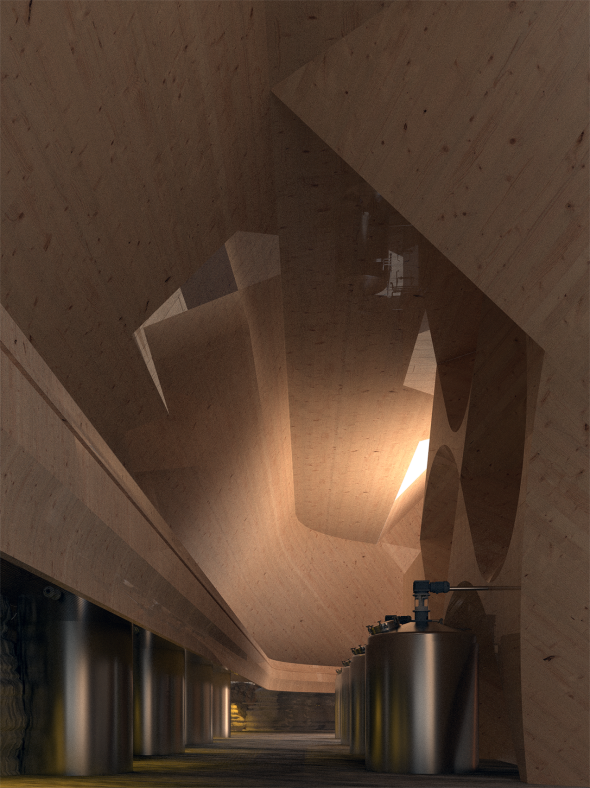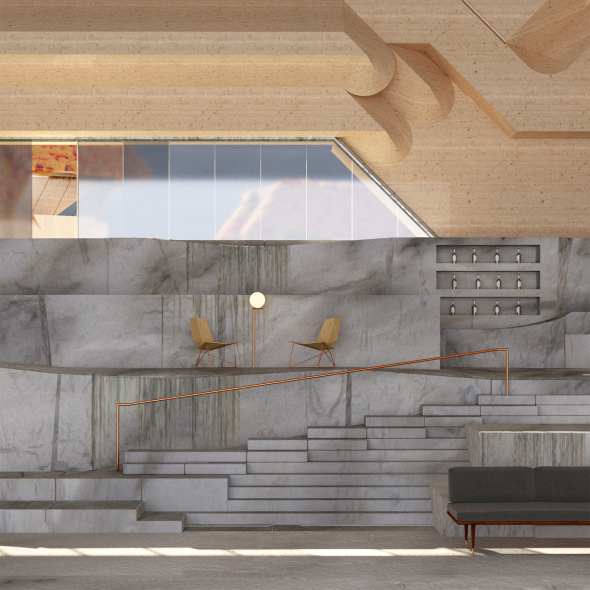Into the Sublime: An immersive distillery for the Scottish Highlands
The concept of the sublime has Classical roots, with the Roman-era author known as Longinus. Etymologically, the term "sublime" refers to architectural elements and comes from the Latin term sublimus (elevated; lofty; sublime) and is derivative of the preposition sub (up to) and limen (threshold, lintel of a doorway). Literally translated, the concept means "up to or at the verge of the limits of the possible."
During the Romantic period (1800–1850), partially as a reaction to the industrial revolution and motived by the Enlightenment, artists embraced the sublime in opposition to the rationalism of the Enlightenment. They used the sublime to express sympathy, awe, wonder, and terror through depictions of nature in its pristine, vast and undeveloped state.
The studio asks how the sublime translates to the contemporary. What are the thresholds and arenas of vastness that test our humanity today?


